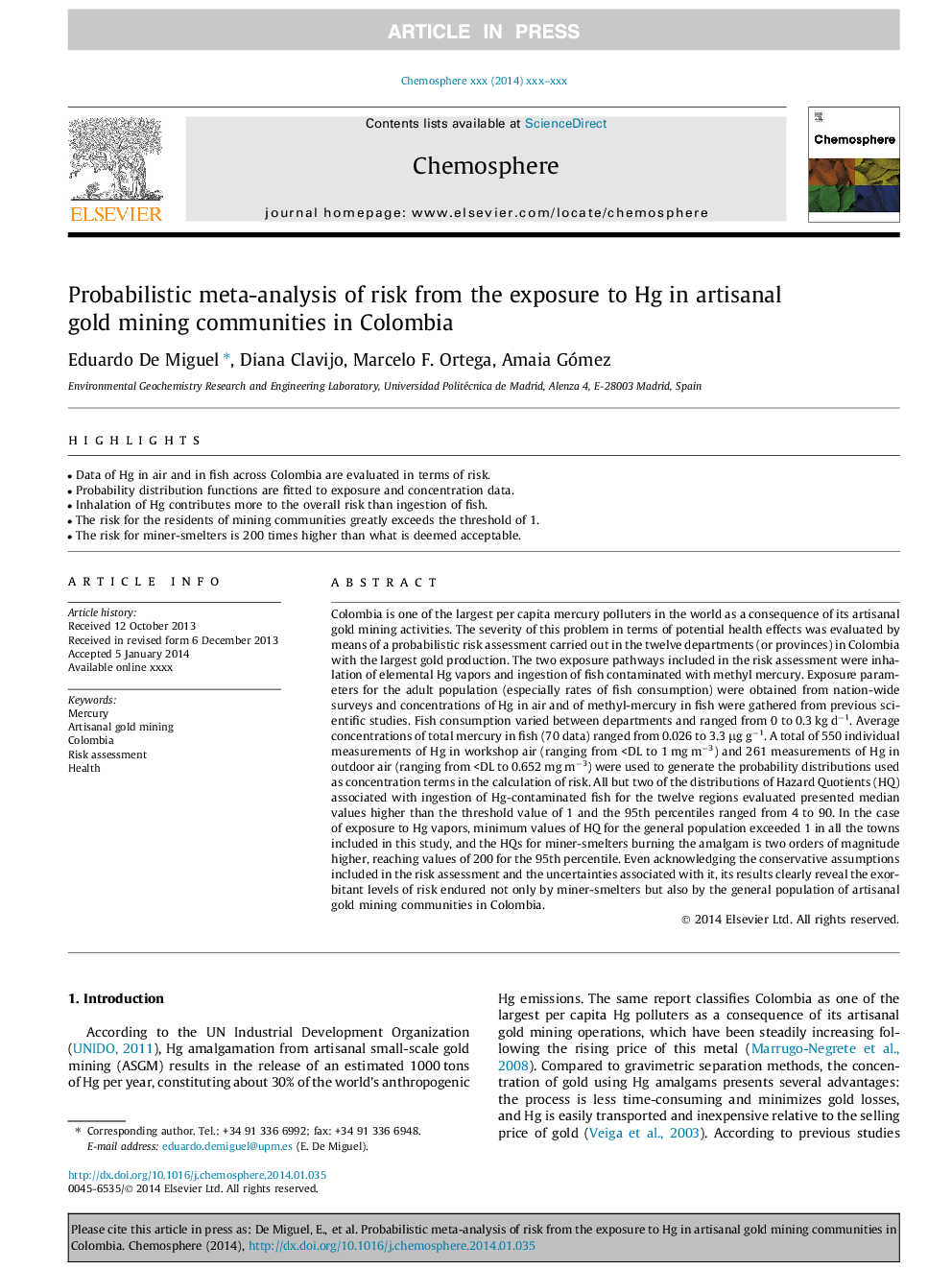| Article ID | Journal | Published Year | Pages | File Type |
|---|---|---|---|---|
| 6309366 | Chemosphere | 2014 | 7 Pages |
Abstract
Colombia is one of the largest per capita mercury polluters in the world as a consequence of its artisanal gold mining activities. The severity of this problem in terms of potential health effects was evaluated by means of a probabilistic risk assessment carried out in the twelve departments (or provinces) in Colombia with the largest gold production. The two exposure pathways included in the risk assessment were inhalation of elemental Hg vapors and ingestion of fish contaminated with methyl mercury. Exposure parameters for the adult population (especially rates of fish consumption) were obtained from nation-wide surveys and concentrations of Hg in air and of methyl-mercury in fish were gathered from previous scientific studies. Fish consumption varied between departments and ranged from 0 to 0.3 kg dâ1. Average concentrations of total mercury in fish (70 data) ranged from 0.026 to 3.3 μg gâ1. A total of 550 individual measurements of Hg in workshop air (ranging from
Related Topics
Life Sciences
Environmental Science
Environmental Chemistry
Authors
Eduardo De Miguel, Diana Clavijo, Marcelo F. Ortega, Amaia Gómez,
